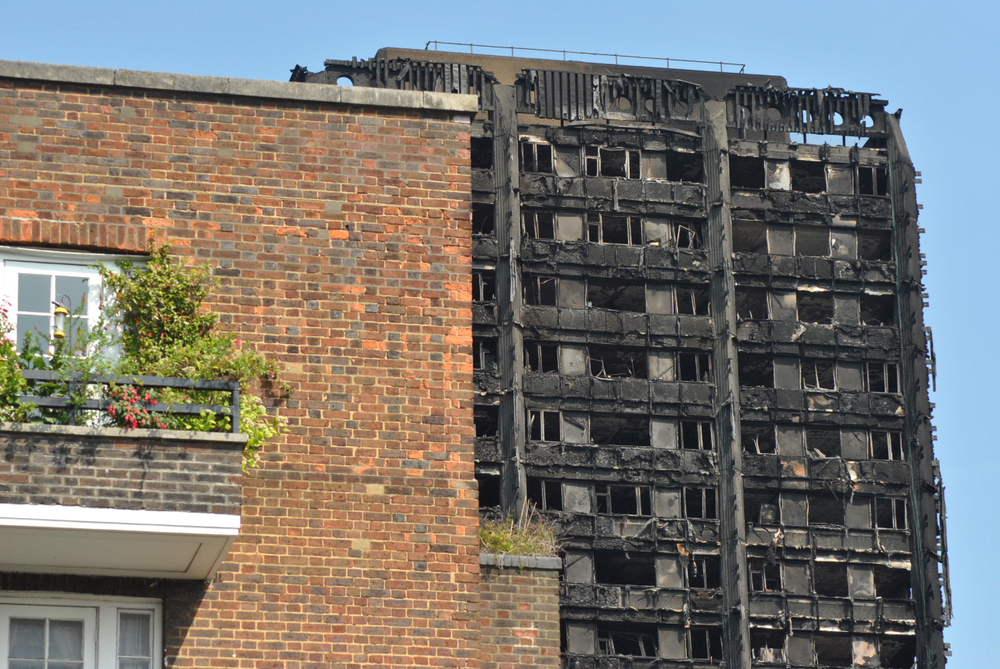Notifire alerting systems: Responding to Grenfell
- June 24, 2021
- 12:33 pm


Iain Hoey
Share this content
The tragic loss of 72 lives in the Grenfell Tower fire that occurred on 14 June 2017 prompted a review of building regulations led by Dame Judith Hackitt and the Grenfell Inquiry chaired by Sir Martin Moore-Bick. The review and the phase one report from the Inquiry have led to legislative, policy and procedural changes that set challenges for building owners, Fire and Rescue Services (FRSs) and the fire safety industry in general.
A key finding of the Grenfell Inquiry phase one report was that the longstanding policy of keeping residents in situ in the event of a fire is no longer tenable and that full or partial evacuation must be considered as a tactical option where appropriate. However, with very few of the existing 6,500 residential tower blocks across the UK being fitted with voice evacuation systems, how are building owners or the Fire and Rescue Service to effect such evacuations?
Retrospective fitting of conventional VESs to these legacy buildings would take years to carry out, be hugely costly and result in considerable disruption to the lives of those affected, many of whom would have to be temporarily relocated whilst the necessary works were conducted (adding yet further to the costs).
Other key findings include
- lack of contingency planning and training in conducting evacuations,
- no ready access for FRSs to fire safety data pertaining to specific buildings,
- the absence of structured plans to evacuate those with limited mobility, and
- local control rooms being overwhelmed with incoming 999 calls, resulting in “cascading” to control rooms that are increasingly remote from the incident itself.
Ged Smart, a qualified electrical engineer with extensive experience of managing the design of fire detection and fire prevention systems in the UK and overseas, resolved to do something practical and tangible in an effort to prevent such a tragic toll occurring again.
Recognising the fear and anxiety that the tragedy had generated in those who reside in tower blocks across the UK and beyond, he also wanted to reduce stress and provide reassurance.
Whilst striving to make provision for evacuations, Ged was alarmed at the confusion amongst many tower block dwellers around what they should do in the event of a fire. He recognised that, in many instances, “remain in situ” would absolutely be the right thing to do, and that disorderly evacuation could imperil residents striving to leave the building and firefighters seeking to access.
Ged formed Rissington Applications Ltd with the aim of developing solutions that better equip the emergency services to provide reassurance to the public and keep people safe.
The inaugural product of Rissington Applications is Notifire, a fire safety alerting system using existing mobile telephony technology to create a text-based evacuation system, but at a tiny fraction of the cost of a conventional voice evacuation system (VES). It also avoids the huge disruption and consequential costs (eg decanting residents to alternative premises during works) that retrospective installation of a conventional VES in legacy buildings might entail.
Notifire can be used by building owners/managing agents to send routine messages to residents (eg advance notice of community meetings, alerts regarding water or power outages, maintenance works, etc). It can also be used by Fire and Rescue Services (FRSs) to send routine fire safety messages or in emergencies such as fires, toxic emissions, serious structural defects, etc). Routine and emergency messages are immediately identifiable through use of different coloured backgrounds and lettering.
When Notifire is adopted, building owners, residents and FRS personal are trained in its operation. Residents will be better informed about how to prepare and what to do in the event of a fire, structural fault or toxic emission, and thereby better equipped to respond appropriately and effectively. This in turn should help reduce the fear and anxiety that undoubtedly exists in many tower blocks across the UK and beyond.
Notifire also enables fire safety data for specific buildings to be made available to Fire and Rescue Services (FRSs) digitally. This can greatly enhance operational planning and allow training to be based on the actual characteristics of real-world buildings.
Notifire also makes provisions for the registration and storage of personal emergency evacuation plans (PEEPs) required under the Fire and Building Safety legislation.
The focus for Notifire is the UK market, but given the ubiquitous nature of mobile telephony, it could prove to be a real game-changer in developing countries where significant proportions of the population reside in tower blocks and own or rent mobile phones. Notifire could prove to be a highly valuable international development initiative, helping to save lives and improve safety at a very modest cost..
Notifire is ready for operational deployment, but we are keen to have the system independently certified and to run trials to identify and iron out any glitches that might exist.
We would also look to make ongoing improvements, for example developing cost effective alternative technology to protect residents who may not possess a mobile phone, and to provide for automated language translation for those whose first language is not English.
For further information about Notifire, please visit our website (https://rissingtonapplications.com) or contact us via [email protected].

